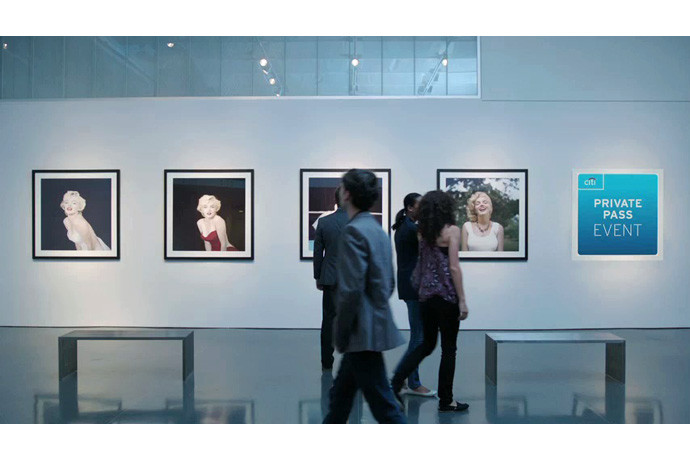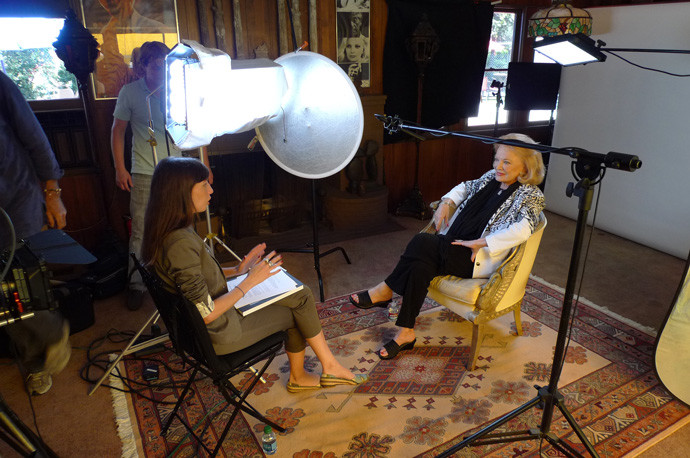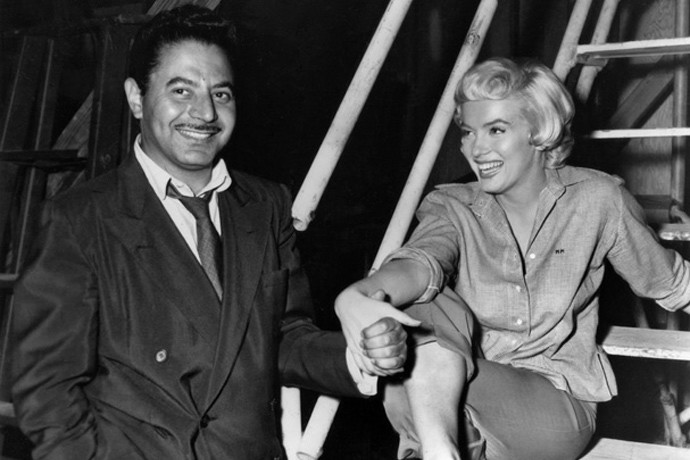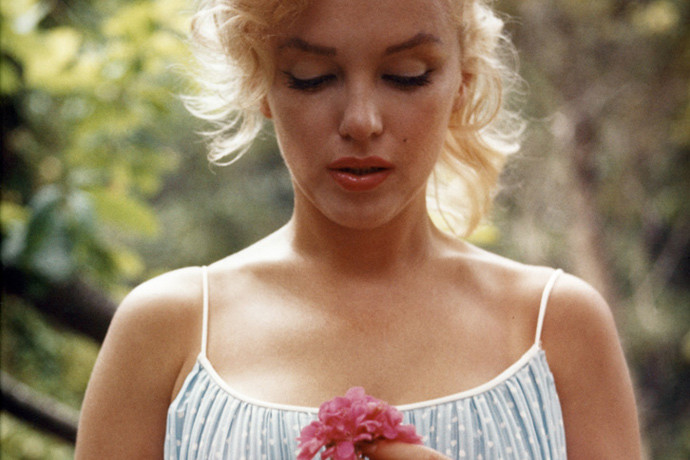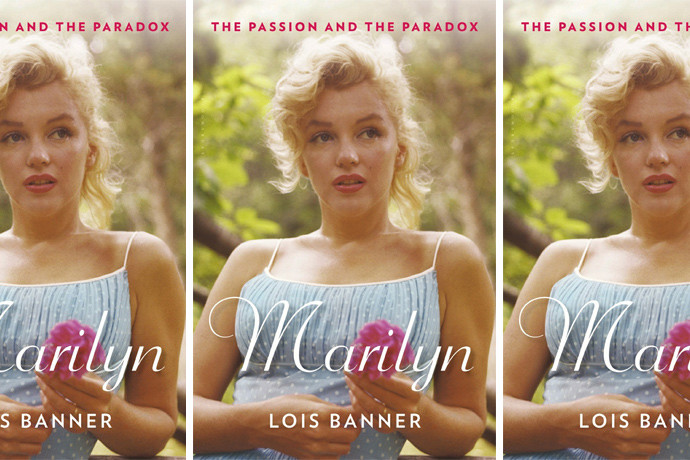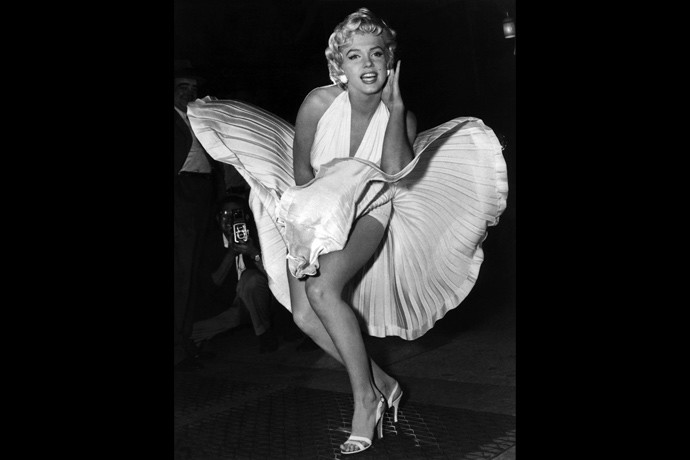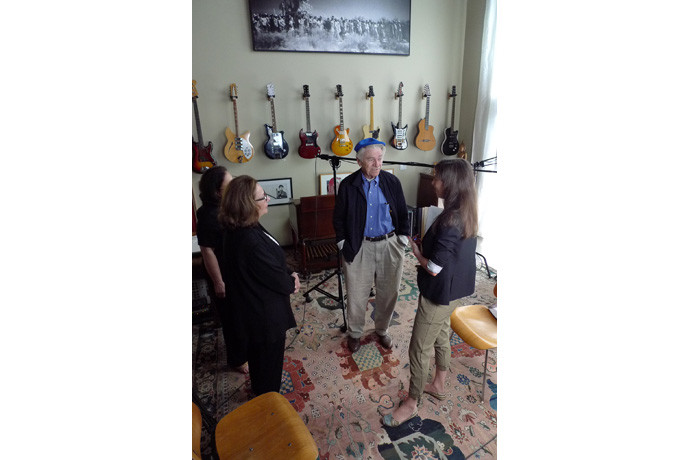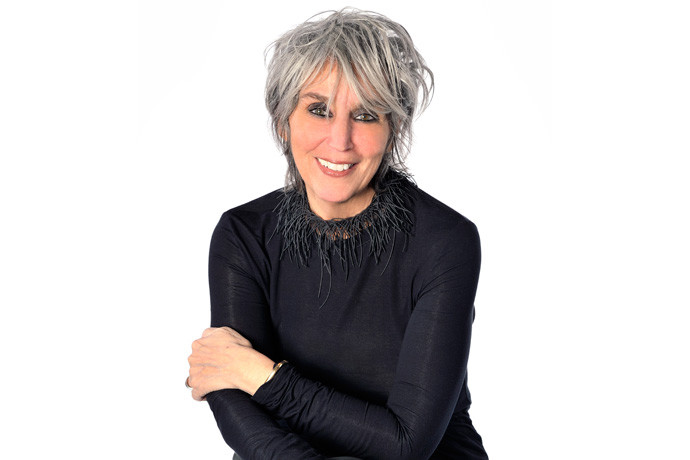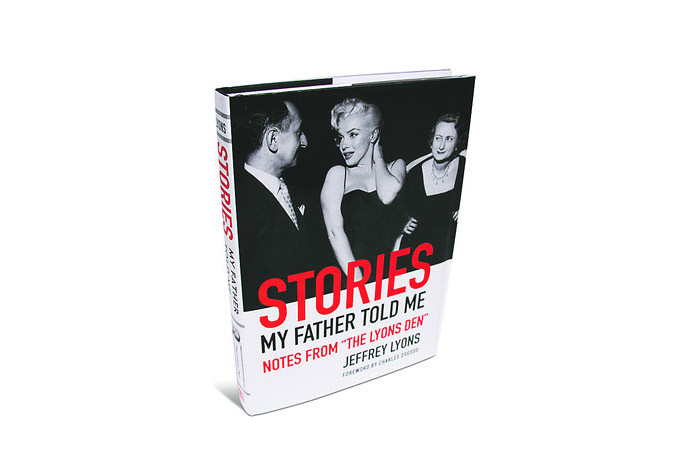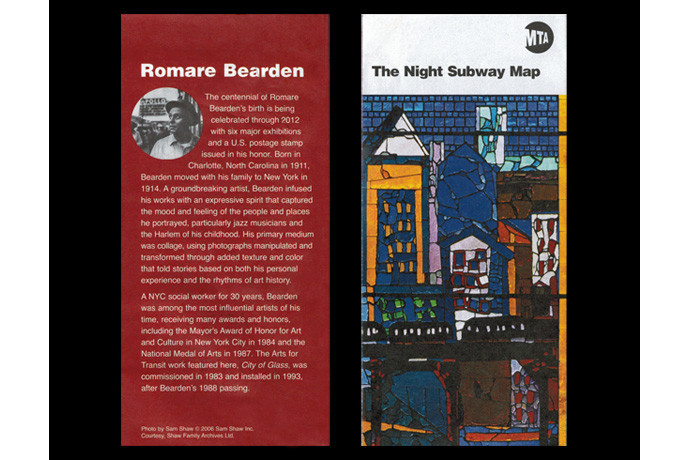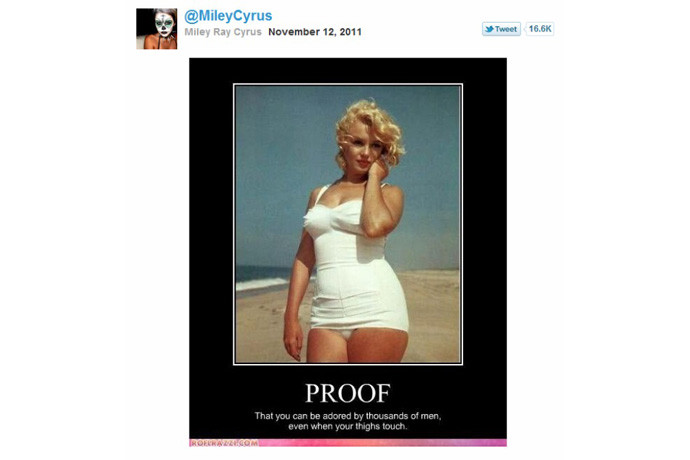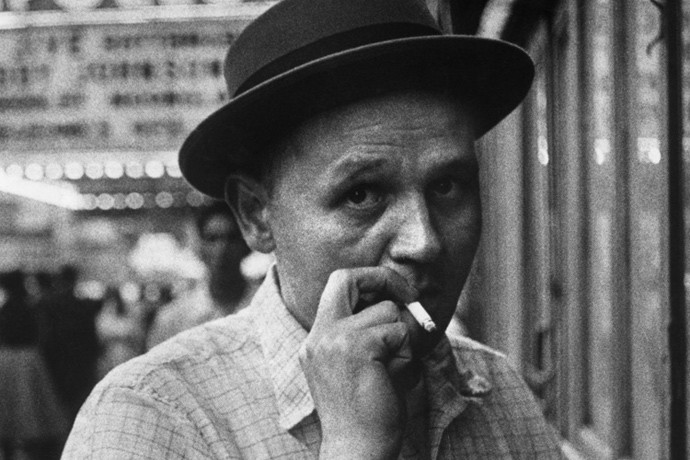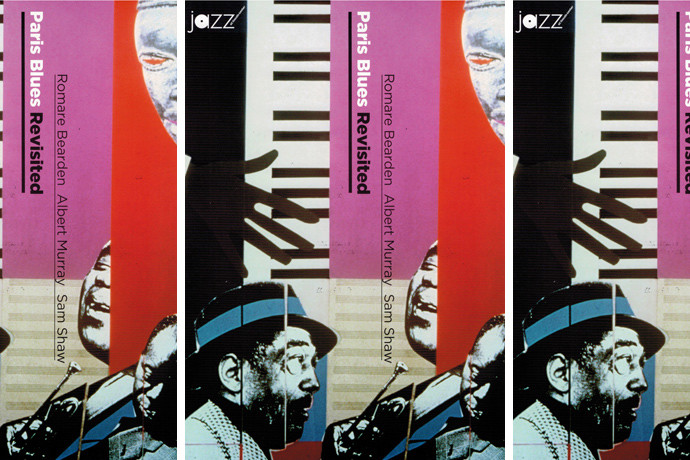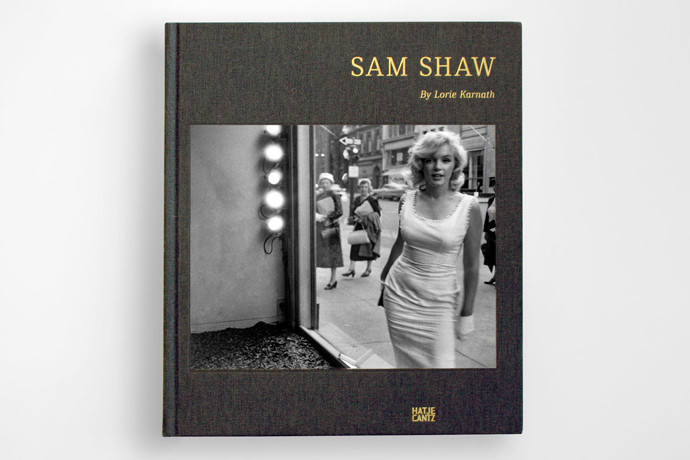Sam Shaw's Photo of Marilyn Appears in Citibank Commercial
August 9th, 2012
A portrait of Marilyn Monroe by Sam Shaw appears in this new Citibank commercial. Hint: it's the one on the right.
Gena Rowlands Interview for Sam Shaw Documentary
August 7, 2012
We recently had the pleasure of speaking with actress Gena Rowlands for the Sam Shaw documentary directed by Gail Levin. Gena graciously welcomed us into her home, a place that appears often in John Cassavetes' work. Faces, Love Streams, and other Cassavetes pictures were shot at this home, which is filled with Sam Shaw's photographs of the films and their family. Above, Gena and Melissa Stevens, Sam Shaw's granddaughter, speak about Sam and John's friendship and filmmaking adventures.
-
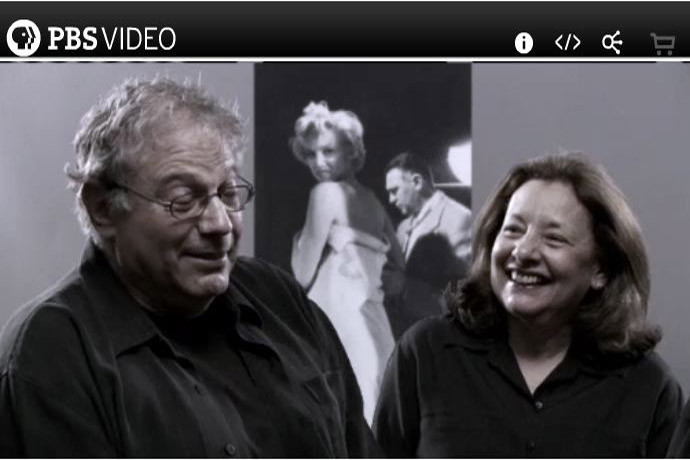
"Marilyn Monroe: Still Life" Airing on PBS
August 5th, 2012
The documentary film Marilyn Monroe: Still Life is airing on PBS Sunday, August 5th. The film, directed by Gail Levin, is part of PBS's American Masters series. It shows photos by Sam Shaw and includes interviews with Larry, Meta, and Edie Shaw, Sam's children.
Biography Article on Marilyn and Sam
August 3, 2012
Biography has published a story on the friendship between Sam Shaw and Marilyn Monroe in honor of the 50th anniversary of her death on August 5th, 2012. Sam befriended Marilyn while working on Viva Zapata!, the 1952 Elia Kazan film.
By Leanne French:
August 5th will mark the 50th anniversary of Marilyn Monroe’s death, and still, a half century later, the world is fascinated by the legend of Hollywood’s most celebrated sex symbol. Marilyn the icon will continue to be an indelible persona in our pop culture, but behind the movie star, there was a woman who few knew as well as photographer Sam Shaw.
Shaw famously shot the iconic image of Marilyn standing over a subway grate with her skirt flying on the set of The Seven Year Itch. But that celebrated photo was just one of many the photographer captured of Marilyn, and his candid images of her, off-set and away from the movie cameras, are the images that tell a more intimate story of a friend whom he described as “beautiful without makeup and in spirit as a person."
Marilyn and Shaw first met in the early 1950s when he was the photographer on the set of Elia Kazan’s Viva Zapata!. The charismatic Shaw was a friend to actors Anthony Quinn and Marlon Brando (whom he famously photographed in a ripped t-shirt for Kazan’s A Streetcar Named Desire.) But it was Kazan’s girlfriend at the time, a young actress named Marilyn Monroe, whom Shaw developed a close friendship with during the making of that movie. Kazan had asked Marilyn to drive Shaw to the set everyday, and this was the start of a relationship between the movie star and photographer that lasted until Marilyn’s tragic death in 1962.
Shaw, who died in 1999, said of Marilyn: "I see her as a metaphor for Hollywood...the good, the bad and the beautiful." And in describing his famous photographs of her, he explained: "I just want to show this fascinating woman with her guard down, at work, at ease, off-stage, during joyous moments in her life as often she was—alone.”
And so it’s fitting that on the 50th anniversary of Marilyn’s death, her friend Sam Shaw, whom she said always made her “look good,” is being celebrated posthumously for his centennial—he would have been 100 this year. Together, the movie star and photographer captured the glamour of their Hollywood era, but maybe more importantly, stepped behind the façade of movie stardom and documented the real Marilyn who happened to become an icon we’ll never forget.Author Lois Banner Interviewed on Diane Rehm
August 2, 2012
Shaw Family friend Lois Banner, the author of Marilyn: The Passion and the Paradox, was interviewed on The Diane Rehm Show. Here is an excerpt from the transcript, courtesy of NPR and WAMU:
REHM
Lois Banner, you're a professor of history and gender studies at the University of Southern California. What is it about Marilyn, centrally, that you, as a professor, are trying to get at?
BANNER
I wanted to get into the complexity of her character, that's really what I wanted to see in her. I've written a lot of biographies. I like writing biography. And when I write biographies, I look at the individual in terms of the times in which they lived and I try to understand their relationship to those times and their impact on the times. And so that's essentially—I did a lot of work with Marilyn in many areas and that's essentially the areas in which I placed her.
REHM
And you really come around at the conclusion that she was an early feminist.
BANNER
Yeah, it's a hard conclusion to reach because there wasn't really a feminist movement in the 1950s.
REHM
Right.
BANNER
It began after her death, soon after her death. I look on her as, first of all, she thought of herself as a career woman. She was very proud of working. She wanted to be a success in her career. She did some very amazing feminist things.
BANNER
She founded her own production company and that was very unusual for women in Hollywood in that period. She fought the Hollywood studio moguls because they were very difficult to women and they were trying—they didn't really like Marilyn. They considered her to be a dumb blonde and they didn't want to place her in dramatic roles. And they didn't want to pay her much money. And finally, they fired her in the summer of 1962 and she fought back hard.
REHM
In effect, she controlled her own career after a certain point.
BANNER
She was controlling her career, by and large, almost from the very beginning. She was the one who was making the decisions and the moves. She, very cleverly, got to her side some fabulous mentors and they gave her a lot of advice. But as Marilyn often said about the group that was around her, they really helped me, but I was the one who put everything together. I made the final decisions.…Lois Banner's New Book on Marilyn
July 17th, 2012
Lois Banner’s insightful new book, Marilyn Monroe: The Passion and the Paradox, features a rarely seen Sam Shaw photo of Marilyn on the cover. Banner describes Marilyn as a proto-feminist who struggled to establish her independence in the male-dominated Hollywood of the 1950s and 60s.
Stacey Bartlett, on the website We Love This Book, describes the Sam Shaw photo that is the subject of the introduction to Banner's book:
Sam Shaw’s photograph of Marilyn Monroe standing on a subway grate with her skirt flying up secured the actress legendary status. Taken in New York City on 15 September 1954 in connection with the movie The Seven Year Itch and published in newspapers worldwide, the shot quickly became one of the most famous photos of the 20th century.
In the photo Marilyn is a vision in white, both erotic and innocent. Not merely a great photographic model demonstrating her dramatic and comedic ability, she resembles a Greek Aphrodite cut out of stone as well as a ballerina whirling on her toes. Her stance is a classic pose from a burlesque routine – caught in a wind produced from underneath the stage, which blows up her skirt and shows her underwear as she tries to hold it down.
Joyous and triumphant in The Seven Year Itch photograph, Marilyn symbolised the freedom and ebullience of the US – victorious in the Second World War – to the rest of the world. So great was her subsequent fame that everyone around the globe soon knew who was meant by the name Marilyn and the initials MM.
The scene in which the photo was taken was a publicity stunt, devised by Shaw to publicise both Marilyn and The Seven Year Itch, for which Shaw was the official stills photographer. The time and location of the shoot were announced in the newspapers, and it drew over 1,000 spectators and hundreds of photographers, all male. It was held on Lexington Avenue in the middle of the night to avoid daytime crowds. Billy Wilder, the director of the movie, interspersed shooting the scene with breaks to allow the photographers present to shoot their own photos of Marilyn on the grate, as she assumed the pose again and again. Innumerable photos were taken, all similar, all ready to be marketed by their producers – what amounted to worldwide mirror-images of Marilyn. Who could forget her after such a campaign?"Marilyn" Exhibit Opens in Florence
June 19th, 2012
Ferragamo opened an exhibit on Marilyn Monroe this week at its Museo Salvatore Ferragamo in Florence, Italy. The retrospective on the screen star includes photographs by Sam Shaw, documents (such as a handwritten order she placed for Ferragamo shoes), film clips and costumes, including the iconic sundress from "The Seven Year Itch" and the pink gown from "Gentlemen Prefer Blondes." The exhibition is open until Jan. 28th, 2012.
Interview with Seymour Cassel for Sam Shaw Documentary
May 22, 2012
Seymour Cassel was interviewed as part of the documentary in production on Sam Shaw, directed by Gail Levin. Cassel knew Sam Shaw from their collaborations on the independent films of John Cassavetes. He shared countless stories about the improvisational, fluid and familiar style of working on a film with Sam Shaw and Cassavetes. Pictured above with Seymour Cassel are Sam's daughters Meta and Edie, and Sam's granddaughter Melissa Stevens.
Sam Shaw Documentary
March 15, 2012
In honor of Sam Shaw's centennial, Shaw Family Archives has teamed up with Emmy award winning producer, director and writer, Gail Levin, to make a documentary film about Sam Shaw's life and work.
We first met Gail during Making The Misfits, a film she made for PBS' Great Performances in 2002. Our paths crossed again a few years later during her American Masters film Marilyn: Still Life in 2006. Some of Gail's more recent work includes Cab Calloway Sketches for the French/German consortium Arte and the Emmy nominated Jeff Bridges, The Dude Abides, which opened the 25th season of American Masters in 2011. Our many conversations about Sam over the years eventually materialized into a collaborative film project currently in production.
Here are some excerpts from an interview with Gail where she discusses Sam Shaw's friendship with Marilyn Monroe, his collaborations with John Cassavetes, and what makes Sam's photographs of stars so unique:
How did you first learn of Sam Shaw and his work?
Gail Levin: About a decade ago I made a film called Making the Misfits for PBS' Great Performances, which was, of course about the making of the film The Misfits, which turned out to be Marilyn Monroe's last film. I had learned in researching the story that Sam Shaw (an unknown name to me then) had been a close friend of Marilyn's. During her marriage to Arthur Miller, she had a miscarriage. Actually she may have had more than one, I don't know for sure, but this time she was told that she would not be able to have children. This was a great blow to an already fragile Marilyn. In the meantime Miller had written a short story called The Misfits based in Reno, Nevado while he was there getting a divorce to marry Marilyn. There was a female in the story, though not prominently, and it turns out it was Sam Shaw who suggested to Arthur Miller that he write The Misfits as a gift to Marilyn to help her regain her confidence and that he build the role of Roslyn for her. So, long way to get to that, was how I first heard of Sam. And then I learned that he was a photographer, had taken many pictures of Marilyn and was also a friend to both the photographic community and the film community, and very established in both worlds...
I think too, at that time, I was led by another friend of both mine and the Shaw family, Susan Lacy, executive producer of PBS' American Masters, to Meta Shaw, one of Sam's daughters. So I phoned Meta and literally that was the beginning. That was my first introduction to Sam and to his family and it stuck...
Then several years later, in 2006, I did make a film for PBS' American Masters on Monroe, just from the point of view of the photography. Of course by then I had become very cognizant of Sam's place in the Marilyn canon and that he had masterminded the "white halter dress" shot, so again I contacted Meta Shaw and this time we licensed Sam's photos as well as include a section of the film on him...
Were you aware that Sam was not just a photographer but also a filmmaker?
Gail Levin: No, I was not, and also at that point I didn't even realize the extent of his work as a photographer. But then I learned of his work as a producer with John Cassavetes and the gigantic treasure trove of photos that exist on Cassavetes' work and family. I still continue to learn of the breadth of Sam's influence in both fields...
How does this film compare to other portraits/biopics you have made?
Gail Levin: This is a very personal and intimate film, which is what I like to do anyway, but in this case, there is again an absolute treasure trove of work unknown to the general public. And Sam's name is also unknown in that way. Yet, within the film world and the photographic world he was a beloved and admired and respected colleague and friend. He knew everyone and everyone knew him. He's the best known guy you never heard of. So I like the idea of getting this gorgeous work out into the world. He had an extraordinary knack for capturing inimitable moments with very famous stars and directors, as well as putting his artistic imprint on films that he produced or art directed or was just in some way involved. The pictures are extraordinary, so this becomes great fodder for a film, and so I have wanted to make this film ever since discovering the magnificence of this largely unknown archive and show Sam to the world!
Even though some of Sam's photos are known all over the world, why do you think he himself is not more well-known?
Gail Levin: I truly don't know. As I said, certainly famous working photographers of the day knew and idolized him, in fact that is still so. Bruce Weber is smitten by Sam's work. And yet somehow, he is still a sort of secret. Perhaps too it is not what Sam himself craved. You get the feeling always that for Sam it was about the work, the moment, the art, what was in front of him and not what fame he could glean from it...
Is there a particular photograph or movie that Sam made that is your favorite or resonates with you personally? If so, why?
Gail Levin: I don't think I can identify just one, but one that I truly love is his shot of Ann Bancroft picking out a baguette from a bakery window with a cigarette just hanging off her lip like she was in a poker game...gorgeous shot! I do love the many Marilyn's when they are truly engaged with each other in the picture making. I love the contact sheet of Gena Rowlands and all the amazing working shots on the Cassavetes' sets. And of course Brando at the pool table in Viva Zapata! But there are so many more....and also I want to mention his tremendous range, he also worked as a photojournalist and those pictures too are filled with such humanity and grit and humor and grace and art, that it is impossible to find just one. I want to emphasize this feeling of humanity and humor, both ever present in Sam's work...
As for movies, one would have to say A Woman Under The Influence. It is such a brave and daring piece of work, so raw and so real and so unrelenting. And it is just a stupendous film all around. Real balls from everyone!
What is something you discovered about Sam's life and work that you did not previously know?
Gail Levin: I didn't anticipate or know again, the real range of his oeuvre, the depth of this archive, nor did I know about his work as a film producer. Not only did he work with Cassavetes but also produced Paris Blues, a 1961 film with Paul Newman, Joannne Woodward, Sidney Poiter, and Diahann Carroll, which too has his artistic touch all over it. Again, I want to emphasize that Sam was truly an artist and worked with an artist's soul, and maybe that's why his name is not known, he worked to the sound of his own drum and that freedom was key to him and perhaps that doesn't always translate into being well known...
If Sam were still here, what would you ask him?
Gail Levin: Everything we have discussed here and more. I would love to know his personal responses to the various relationships he had with some of the most incandescent people in the movie, art and music world, and to hear his own anecdotes and stories and to see his own reactions to those questions. I would ask what in him, if he could even identify it, made him so intuitively know the moment to shoot. Is there a way to even define something that is really so innate and so individual?Film Critic Jeffrey Lyons' New Book
February 7th, 2012
Sam Shaw's photo of Marilyn Monroe, between columnist Leonard Lyons and his wife Sylvia, graces the cover of Jeffrey Lyons' new book Stories My Father Told Me: Notes from "The Lyons Den." Lyons has worked as a film critic on radio and television since the 1970s. He is the son of Leonard Lyons, the famed newspaper columnist known for his column "The Lyons Den." As a life-long family friend of the Shaws, Jeffrey Lyons watched Sam work on film sets from an early age. He discusses his impressions of Sam in this video.
MTA Releases First Night Subway Map
January 30, 2012
The MTA has just released its first ever Night Subway Map. In addition to showing the subway system in its late-night form, the map has an image of a faceted glass piece by the artist Romare Bearden on the reverse. Sam Shaw's portrait of Bearden taken in front of the Apollo Theatre appears on the map next to the artist's biography. The piece by Bearden was commissioned for MTA Arts for Transit and was installed in the Westchester Square station in the Bronx in 1993. The MTA has printed a limited number of copies of this first Night Subway Map, so pick one up soon.
Sam Shaw's Photo of Marilyn Tweeted by Miley Cyrus
November 19th, 2011
Miley Cyrus tweeted this photo of Marilyn Monroe by Sam Shaw as part of her response to critics of her recent weight gain. It was one of the top 10 most re-tweeted pics of the week, according to the website mashable.com.
City Arts Review of "Paris Blues Revisited" Exhibition
October 11th, 2011
“Paris Blues Gets Improvised” By Valerie Gladstone:
Rescuing Bearden from Hollywood
In 1961, jazz lovers couldn’t wait for the release of photographer Sam Shaw’s movie Paris Blues. With a score by Duke Ellington and Billy Strayhorn and co-starring Louis Armstrong, it sounded like a brilliant idea; a glorious celebration of the City of Lights’ devotion to jazz. Well, yes—until Hollywood got hold of it and the producer turned real events into clichéd fiction. The film eventually came with the message that jazz didn’t warrant a place beside Western classical music.
Twenty years later, artist Romare Bearden, writer and historian Albert Murray (a founder of Jazz at Lincoln Center) and Shaw decided to set the record straight by creating a book together, which they titled Paris Blues Revisited. But though they got more than halfway through the project, finishing 19 spreads, it was never completed.
Jazz at Lincoln Center’s top-notch curatorial team, consisting of NYU lecturer Dan Dawson, Diedra Harris-Kelley, co-director of the Bearden Foundation and Bearden’s niece, and Columbia University English and Literature professor Robert G. O’Meally, wasn’t about to let those efforts go to waste. Last January, they met with the Shaws at their archive and saw the book for the first time.
“Once we’d seen it, the planning for the show began in earnest,” says O’Meally. The work will be on exhibit at Jazz at Lincoln Center through Feb. 28, 2012, a collaboration with the Romare Bearden Foundation on the centennial of Bearden’s birth.
Adrian Ellis, executive director of Jazz at Lincoln Center, considers it a terrific show for the center’s exhibition space at its headquarters in the Time Warner Center. “It’s exciting to bring this unrealized project to the public,” he says. “It gives a whole new perspective on the period and shows another dimension of Shaw, Bearden and Murray’s talent.”
The Bearden Foundation leapt at the chance to show the contents of the long-lost book, which include the artist’s vibrant paintings and collages, Murray’s poetic writings and Shaw’s evocative photographs, all of them related to Ellington and Armstrong in Paris as well as to the jazz scene in New Orleans and New York. Using only the best reproductions of Bearden’s works, the curators and Linda Florio of Florio Design set up the show as a picture-and-word book on the walls, so viewers can experience it as they would a book.
“The works give a wonderful flavor of the time,” says Harris-Kelley. “These artists were all friends who had experienced that wonderful period in Paris, New Orleans and New York. They worked together like a jazz ensemble.”
In Paris Blues Revisited, Jazz at Lincoln Center puts on view five photographs by Shaw, 19 collages by Bearden—which include parts of Shaw’s photographs—and two books by Albert Murray with covers illustrated by Bearden. O’Meally explains why this is no ordinary art exhibit. “What you see here,” he says, “is the visual equivalent of music. These artists present Paris as a city as swinging as New Orleans and Harlem, with musicians like Django Reinhardt and Sidney Bechet making their homes there. Because some of Bearden’s works are unfinished, you get the feeling of a rehearsal and a sense of their improvisatory process. They did what the movie was supposed to do—but far better.”"Paris Blues Revisited" Exhibit Opens at Jazz Lincoln Center
October 11th, 2011
Jazz at Lincoln Center Press Release:
Paris Blues Revisited presents work from a heretofore unpublished book-project of the early 1980s that involved three artists—Bearden the painter, Murray the writer, Shaw the photographer—working together in close collaboration. Inspired by the Shaw-produced Hollywood movie of 1961 called Paris Blues, with score by Duke Ellington and Billy Strayhorn, and co-starring Louis Armstrong, this exhibit focuses on Ellington and Armstrong in Paris.
This exhibition is presented in collaboration with the Romare Bearden Foundation in celebration of the centennial of Bearden's birth.
Paris Blues Revisited is curated by Robert G. O'Meally, C. Daniel Dawson and Diedra Harris Kelley, and designed by Florio Design.
Paris Blues Revisited, an exhibition about the collaboration between Sam Shaw, Romare Bearden, and Albert Murray on the Paris Blues project at Jazz at Lincoln Center, is on display through July 23, 2012St. Louis Beacon Reviews Sam Shaw Book
October 9th, 2011
by Nick Otten
Sam Shaw (1912-99) was probably the most famous photographer that you've never quite learned about. He was seriously old school, doing black-and-white photojournalism for decades for the big weekly magazines, but he was also wide-ranging and innovative, especially in helping to start the independent-film movement. In essence, he was overshadowed by his own good work.
Shaw has now been memorialized in a new book by Lorie Karnath, his longtime friend. Karnath is a world traveler and president of the legendary Explorers Club, whose members have included explorers, scientists, U.S. presidents and astronauts. She has lived in a rainforest, traveled the Silk Road and led an expedition to the North Pole, besides writing a number of books.
Karnath often traveled with Shaw and took voluminous notes for a book they planned together, presenting and illustrating Shaw's philosophical musings on the art and practice of photography. "Sam Shaw: A Personal Point of View" is the result, a weighty coffee table-size book of 240 pages and about 200 remarkable photos by Shaw.
You already almost certainly know about two world-famous photographs by Sam Shaw. The first was the "shot seen round the world" of Marilyn Monroe standing over a sidewalk grate that blows her white dress up over her knees. The second was the macho portrait of Marlon Brando, as Stanley Kowalski from "A Streetcar Named Desire," brooding in a torn T-shirt. Both photos were conceived and taken by Shaw.
On the other hand, even veteran film fans do not know that Sam Shaw was a major influence in the development of what we now call "indie" films. In the early 1950s, Shaw met young, little-known John Cassavetes and championed him as a creative, new force in the theatrical world. Shaw introduced Cassavetes and his actress-wife, Gena Rowlands, to important theater people in New York, and then went on to produce most of Cassavetes' remarkable string of independent movies. Those films, including "Faces," "A Woman Under the Influence" and "The Killing of a Chinese Bookie," were opening salvos in the independent film movement. "Indie" films have since become a major counterweight to Hollywood blockbusters in the U.S. movie world.
Sam Shaw was a creative force all his life. He began as a painter, then went into journalism, working also as a political cartoonist, before becoming an art director for magazines. He also worked as a sculptor and eventually settled into producing international photo essays for magazines such as "Life," "Look" and "Collier's." His last "professions" included the groundbreaking movies for Cassavetes and taking publicity photos of virtually everybody important in Hollywood, especially concentrating on the great screen beauties.
Sam Shaw not only made Hollywood portraits of stars ranging from his good friend Marilyn Monroe to Deborah Harry of Blondie, he also managed to create stunning character studies of them unlike any other photos you are likely to see: Marilyn, unmistakable even from the back, in a pair of trendsetting blue jeans; Ingrid Bergman as a vicious woman returning to destroy a town in "The Visit"; Sophia Loren as a sweetly sexy force of nature; Liz Taylor as somehow just an interesting American girl, even at the height of her notorious "Cleopatra" days.
Shaw's ability to portray beautiful women uniquely may never be more apparent than in a shot of Natalie Wood, bare-shouldered and freckly, with her head thrown back, neck exposed, hair hanging in a sensuous fall. Until looking at that photograph, I never realized that in every other picture I've ever seen of Natalie Wood, she looks like a Hollywood construct, ridiculously perfected, nearly more plastic than human.
Shaw also created unique photos of Fred Astaire, Marlon Brando, Sugar Ray Robinson and other famous men that can make you re-think what you know about such figures.
In his mid-century heyday from the 1940s into the 1970s, Shaw was one of the best photo-storytellers in the world. His "How America Lives" series compares favorably with the Depression photos by Walker Evans, his portraits could be heartbreaking (Tennessee Williams), brutally true (Greek men in a taverna in Crete), lushly romantic (Venice in the snow). Even his crime-scene photos were masterful. The legendary Weegee, generally considered the greatest crime photographer who ever lived, once signed a photograph, "To Sam, my only rival."
One astounding Shaw photo, "Gitano mother with her child, Spain, 1968," shows a whole family, nearly a clan, of 17 people. Children play, a young couple flirts, another couple washes dishes, a boy plays guitar, a grandmother dances along. At the swirling center of the family circle of wagons and implements is a dancing mother who confidently breastfeeds her baby while she twirls! Shaw himself refers to the scene as "the cosmos of humanity and life."
Shaw deliberately worked to connect his central subjects to their contexts and even tried the nearly impossible task of somehow connecting them to the photographer himself, outside of the picture frame. In what first seems a simple photo of children at play, "Kids playing with marbles, Missouri, mid-1940s," we see five children crouched on the ground, but from the marbles' point-of-view. On closer inspection, we also see that one of the boys is holding, not more marbles, but some of the photographer's used flashbulbs.
The last time I saw a life's-work of photographs comparable to this one was Edward Steichen's "A Life in Photography" (1963), and Karnath's new book may even be patterned after that big, squarish classic. The two tomes could offer a thoroughly instructive and enjoyable experience in photography, if studied side by side.
Not that "Sam Shaw" is perfect. The book has been simultaneously published in an English version and a German version by a German publisher, Hatje Cantz, and could have used one more good going-over by the proofreader. Also, the $75 price is nearly as hefty as the approximately 11"x13" book itself. Still, the copy is not the key to a book of master photographs, and these pictures are unquestionably masterful, in some cases unique, in many cases surprising, always powerful and subtle, and often astounding.
While in St. Louis, author Lorie Karnath will read from her new book on Sam Shaw on Wed., Oct. 12, 5:30 p.m., at Left Bank Books, 399 N. Euclid, in the Central West End, with a 5 p.m. reception hosted by the St. Louis Beacon.
Karnath will also attend the Lowell Thomas Awards Dinner, hosted by the St. Louis chapter of the Explorers Club on Oct. 15 at the Missouri History Museum, marking the first time the award has ever been given outside of New York.- NEWER POSTS
